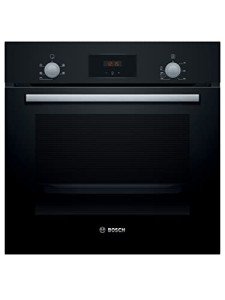The 12 Most Popular Builtin Oven Accounts To Follow On Twitter

The Comprehensive Guide to Built-In Ovens: Features, Benefits, and FAQs
Built-in ovens are a popular option for contemporary cooking areas, offering adaptability, performance, and a sleek style that integrates flawlessly into kitchen cabinetry. This article will delve into the various elements of built-in ovens, including their functions, advantages, setup options, upkeep tips, and answers to typically asked concerns.
What is a Built-In Oven?
A built-in oven is developed to be set up within kitchen cabinets and is available in various setups, such as single or double ovens. Unlike freestanding ovens, built-in models offer a structured appearance and provide more flexibility in kitchen design. They are available in electric, gas, and steam alternatives, dealing with a range of cooking choices.
Functions of Built-In Ovens
Built-in ovens are packed with functions that enhance cooking experiences. Here are some of the most typical features to consider:
| Feature | Description |
|---|---|
| Self-Cleaning | Lots of designs include a self-cleaning function that burns off residue at heats, streamlining maintenance. |
| Convection Cooking | This function utilizes a fan to flow hot air, cooking food more evenly and quickly. |
| Smart Technology | Some ovens come geared up with Wi-Fi connectivity, enabling users to manage the oven from another location through smartphone. |
| Numerous Cooking Modes | Consist of choices such as baking, broiling, roasting, and air frying, offering flexibility for various meals. |
| Temperature Probe | Keeps an eye on the internal temperature level of food, making sure perfectly cooked meals every time. |
| Smooth Design Options | Available in different finishes (stainless steel, black, white) to match kitchen design. |
Advantages of Built-In Ovens
The setup of a built-in oven brings many benefits to any kitchen:
- Space Efficiency: Built-in ovens maximize kitchen space, offering a clean and orderly look without compromising performance.
- Boosted Cooking Performance: With innovative functions like convection cooking and precise temperature level controls, built-in ovens often exceed standard designs.
- Style Flexibility: These ovens can be installed at eye level, permitting simple access without bending down, which can be particularly advantageous for individuals with physical constraints.
- Improved Resale Value: A well-designed kitchen with top quality built-in appliances may appeal to prospective purchasers, enhancing overall property value.
- Modification Options: Many brands offer personalized designs that fit the particular measurements and aesthetic of individual kitchens.
Installation Options
When choosing a built-in oven, understanding the setup options is vital. Here are the most common setups:
- Single Built-In Oven: Ideal for smaller sized cooking areas, these systems provide adequate area to cook a range of dishes at the same time, best for daily cooking.
- Double Built-In Oven: Best fit for devoted cooks and large families, double ovens permit simultaneous cooking at two various temperature levels, perfect for meals that need different cooking techniques.
- Combination Steam and Oven: A hybrid option that integrates the advantages of traditional baking with steam cooking. This alternative is exceptional for retaining moisture in foods, making it best for baking bread or roasting meats.
Maintenance Tips for Built-In Ovens
Preserving a built-in oven is necessary for its durability and optimal efficiency. Here are some practical maintenance pointers:
- Regular Cleaning: Use the self-cleaning function when required, and wipe down the exterior and interior surfaces routinely to avoid grease buildup.
- Inspect the Seals: Inspect the oven door seals for any wear or damage to ensure correct insulation and cooking efficiency.
- Temperature level Calibration: Occasionally evaluate the temperature level precision using an oven thermometer, especially if cooking times seem longer than typical.
- Ventilation: Ensure adequate ventilation around the oven to prevent overheating, especially for built-in models that might be surrounded by cabinetry.
FAQs About Built-In Ovens
1. Are built-in built in gas oven and hob packages than freestanding designs?Yes, built-in ovens tend to be more pricey due to their design, setup requirements, and additional functions. Nevertheless, their advantages can justify the expense in the long run.
2. Can you set up a built-in oven yourself?While some useful individuals might try to install a built-in oven, it is recommended to hire a professional to ensure proper installation, ventilation, and safety standards.
3. What is the typical life expectancy of a built-in oven?The typical life-span of a built-in oven is around 10 to 15 years, depending on use and upkeep. Routine care can assist extend its durability.
4. Are built-in ovens energy efficient?Numerous contemporary built-in ovens are designed with energy efficiency in mind, including functions like insulation and exact temperature level controls that might reduce energy usage compared to older designs.
5. built-in oven and gas hob packages built-in oven be repaired if it breaks?Yes, built-in ovens can often be fixed. It is suggested to get in touch with a certified technician for medical diagnoses and repair work to make sure security and compliance with service warranty agreements.
Built-in ovens are an outstanding addition to any modern-day kitchen, offering a mix of style, performance, and advanced cooking features. With the best understanding about their functions, advantages, and maintenance, property owners can make informed choices to improve their culinary experiences. As kitchen style patterns continue to develop, the built-in oven remains a staple for those wanting to mix aesthetics with effectiveness in their cooking areas.

